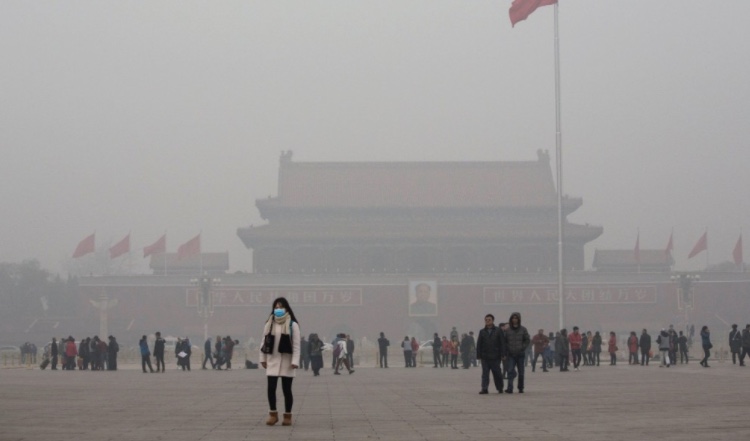 |
| Reviews and Templates for Expression We |
China Crack Down on Factories May Help Them Market to American Retailers

The Chinese government is forcing factories there to take a bitter pill — one that is difficult to swallow in the short term but over time, will give its industries a better chance to compete in the international economy.
That’s because they are now being forced to comply with Chinese air pollution laws, which is causing many companies to clean up or to temporarily shut down. But doing so will help them get their products into such outlets as WalMart, Target and CostCo that have strict policies when it comes to what gets on their store shelves.
Inspection crews are now monitoring factories in real time and in some cases, factory managers are getting jail time for being out of compliance. The Chinese Ministry of Environment has been sending inspectors to provinces around the country and have charged 80,000 factories with criminal offenses, says National Public Radio. Companies have had to stop producing goods and in other instances, they have moved out of the country, it adds.
How did it reach this point? The smog is so bad that it has covered cities while disrupting airline flights and seaport operations, all of which has upended daily lives and business. Part of the issue is the current over-reliance on coal, although the government is trying to transition to cleaner fuels to not just clean its cities but to also comply with the Paris climate accord to which it has committed.
“After all, factories will be better, more sustainable, and more socially responsible after being inspected,” Archie Liu, general manager of MKT & Associates told NPR. “It’s better for our supply chain. Then we can tell Walmart, Costco, and other retailers of ours that we’re qualified and that everything we make for Americans are environmentally friendly.”
Liu estimates that 40% of all Chinese factories have been temporarily shut down because of this crackdown. But most people want to see clean rivers and blue skies, he adds.
It is also necessary to get Chinese goods in American markets — especially as the major retailers seek to reduce their carbon footprints. Take WalMart:
It has set three goals and to improve in the following areas: achieving zero waste, increasing renewable energy and selling increasingly sustainable products over time in sustainable packaging. The company set them in aspirational ways and since 2005, it has been on its way to chipping away at these aims. It is serving all stakeholders.
Building on those sustainability goals it set in 2005, it shoots further — to create zero waste in company operations, to operate with 100% renewable energy — 50% by 2025 — and to sell products that sustain natural resources and the environment. “Those aspirational goals have guided how Walmart engages on those vital issues and progress has been made toward them. The new roadmap builds on progress to date, but also broadens the company’s vision of its role in society,” Doug McMillon, chief executive of WalMart said at a conference.
And beyond improving the environmental performance of Chinese industries, what else is the country doing to ingratiate itself more with the global community and specifically the retailers that will market its wares?
The United States and China, together, produce about 42 percent of all greenhouse gas emissions. In this country, totals are falling because of the coal-to-gas transition. But in China, they are rising, largely because it is building one coal generator a month.
But China is part of the Energy Transitions Commission that aims to get all countries to reduce their carbon emissions. It will still be using coal fired power. But it will be using it to a much lesser extent than it has been. And what few people realize, says Jeremy Oppenheim, program director for the New Climate Economy project, is that it will be retiring its older and less efficient coal plants and it will be using more efficient coal-fired plants.
The Asian country is making investments in advanced coal generation that include supercritical and ultra-supercritical plants. In those cases, for each unit of coal input into the system, more power comes out on the back end, reducing overall pollution levels. General Electric Corp., for example, is implementing coal gasification technology there.
The Chinese government is also moving to diversify its electricity portfolio: By 2020, China says that sustainable power will rise from about 10 percent today to provide 15 percent of its electricity. By 2050 green fuels will supply 30 percent. China also hopes to increase its nuclear portfolio from 2.3 percent of its generation today to 6 percent — 40,000 megawatts — by 2020. By 2050, the aim is to have at least 150,000 megawatts of installed nuclear capacity, or 22 percent of the mix.
As such, Lockheed Martin announced it is developing a 10-megawatt ocean thermal energy conversion pilot power plant off the coast of southern China. Meanwhile, China is also buying nuclear technology from Westinghouse, owned by Toshiba Corp.
China is taking bold steps to reduce its emissions not just because it wants to give its citizens a better quality of life but also because it seeks to be an integral part of global commerce. But as China grows economically, it will inevitably add to its environmental woes. It riches, though, will better enable it to cut down on such air pollution as it incorporate new technologies.
|
|
|
|
Copyright remains with the original authors |